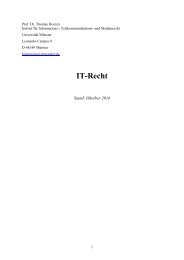3d4yVkKMl
3d4yVkKMl
3d4yVkKMl
You also want an ePaper? Increase the reach of your titles
YUMPU automatically turns print PDFs into web optimized ePapers that Google loves.
- 55 -<br />
183. As depicted in this illustration, the overall sample size falls within a range that<br />
corresponds to what the JARPA II Research Plan sets forth as the minimum requirements for most<br />
of the research that JARPA II is designed to undertake. Japan asserts that for this reason, the<br />
overall annual lethal sample size was set at 850 (plus or minus 10 per cent, which allows for a<br />
maximum of 935 minke whales per year). As noted above (see paragraphs 159 and 169), Japan<br />
considered this number of whales to be sufficient for purposes of research, taking into account the<br />
need to avoid causing harm to the stocks.<br />
184. In contrast, in Australia’s view, Japan started with the goal of establishing a sample size<br />
of approximately 850 minke whales per year and then “retro-fitted” the programme’s design by<br />
selecting values designed to generate sample sizes for particular research items that corresponded<br />
to Japan’s desired overall sample size. Australia emphasizes that the JARPA II Research Plan is<br />
not clear in stating the reasons for the selection of the particular sample size appertaining to each<br />
research item. Australia also notes that different choices as to values for certain variables would<br />
have led to dramatically smaller sample sizes, but that, in general, the JARPA II Research Plan<br />
provides no explanation for the underlying decisions to use values that generate larger sample<br />
sizes. These shortcomings, in Australia’s view, support its conclusion that the minke whale sample<br />
size was set not for purposes of scientific research, but instead to meet Japan’s funding<br />
requirements and commercial objectives.<br />
185. In light of these divergent views, the Court will consider the evidence regarding Japan’s<br />
selection of the various minimum sample sizes that it chose for different individual research items,<br />
which form the basis for the overall sample size for minke whales. As noted above (see<br />
paragraph 172), the purpose of such an inquiry is not to second-guess the scientific judgments<br />
made by individual scientists or by Japan, but rather to examine whether Japan, in light<br />
of JARPA II’s stated research objectives, has demonstrated a reasonable basis for annual sample<br />
sizes pertaining to particular research items, leading to the overall sample size of 850 (plus or<br />
minus 10 per cent) for minke whales.<br />
186. In the JARPA II Research Plan, individual sample size calculations are presented with<br />
respect to each of the items referred to in the above illustration: age at sexual maturity, apparent<br />
pregnancy rate, blubber thickness, pathological monitoring (i.e., monitoring of contaminant levels),<br />
mixing patterns between different stocks, and “DNA mark-recapture”, which Japan describes as a<br />
method for researching population trends.<br />
187. The Court notes at the outset that the JARPA II Research Plan states that for all<br />
parameters, “a sample size needed to detect changes in a six-year period . . . has been adopted as<br />
the pertinent criterion”. The JARPA II Research Plan does not explain the reason for this threshold<br />
decision, but Japan offered some explanations during these proceedings, which are discussed below<br />
(see paragraph 192).



